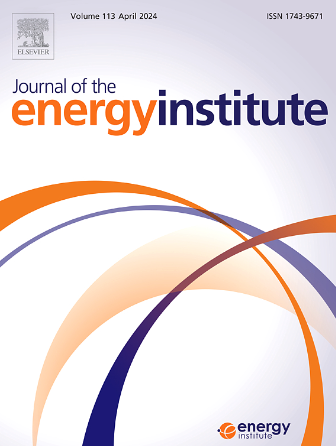Valorization of Cyanophyta by hydrothermal carbonization: Co-production of CO2 adsorbents and fluorescent carbon dots
IF 5.6
2区 工程技术
Q2 ENERGY & FUELS
引用次数: 0
Abstract
Cyanophyta blooms can lead to eutrophication and generate algal toxins. To reduce their environmental risks, hydrothermal carbonization was innovatively applied to simultaneously produce activated carbon (AC) and carbon dots (CDs). AC was further used for CO2 adsorption while CDs were for preparing fluorescent materials. Yields of AC and CDs were investigated under mild conditions of 160–240 °C and 15–240 min. Characterization results show that AC exhibited a large specific surface area of 990 m2 g−1 and pore volume of 1.14 cm3 g−1, contributing to high CO2 adsorption capacities of 3.26 mmol g−1 (0 °C) and 2.06 mmol g−1 (25 °C). Additionally, nitrogen and oxygen self-doping heteroatoms CDs, with a photoluminescence quantum yield of 2.58 %, emitted stable blue fluorescence under the ultraviolet light and were successfully applied to produce invisible ink. This work provides a paradigm for CO2 reduction and high-value material synthesis via the thermochemical conversion of hazardous biomass.

求助全文
约1分钟内获得全文
求助全文
来源期刊

Journal of The Energy Institute
工程技术-能源与燃料
CiteScore
10.60
自引率
5.30%
发文量
166
审稿时长
16 days
期刊介绍:
The Journal of the Energy Institute provides peer reviewed coverage of original high quality research on energy, engineering and technology.The coverage is broad and the main areas of interest include:
Combustion engineering and associated technologies; process heating; power generation; engines and propulsion; emissions and environmental pollution control; clean coal technologies; carbon abatement technologies
Emissions and environmental pollution control; safety and hazards;
Clean coal technologies; carbon abatement technologies, including carbon capture and storage, CCS;
Petroleum engineering and fuel quality, including storage and transport
Alternative energy sources; biomass utilisation and biomass conversion technologies; energy from waste, incineration and recycling
Energy conversion, energy recovery and energy efficiency; space heating, fuel cells, heat pumps and cooling systems
Energy storage
The journal''s coverage reflects changes in energy technology that result from the transition to more efficient energy production and end use together with reduced carbon emission.
 求助内容:
求助内容: 应助结果提醒方式:
应助结果提醒方式:


